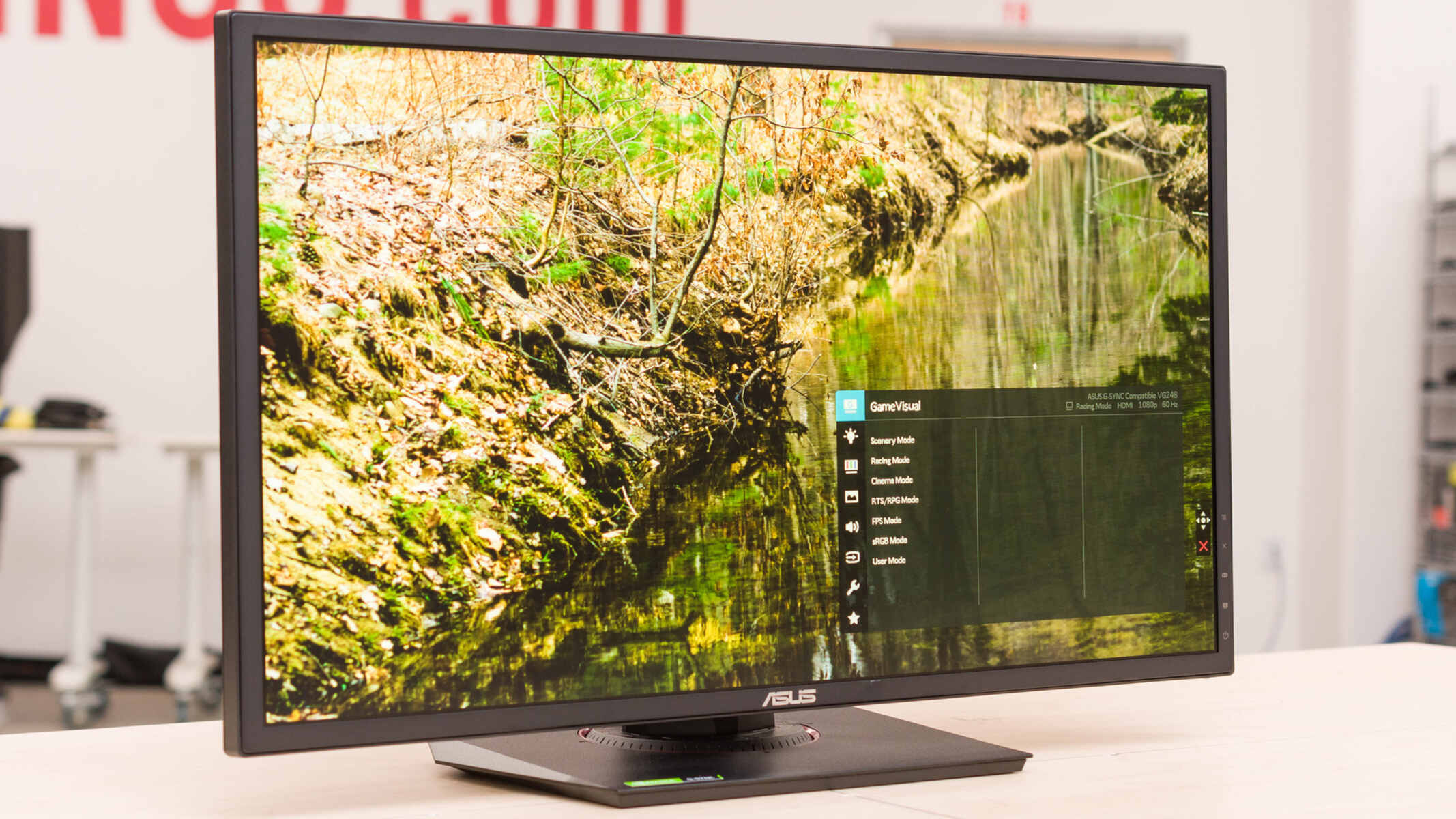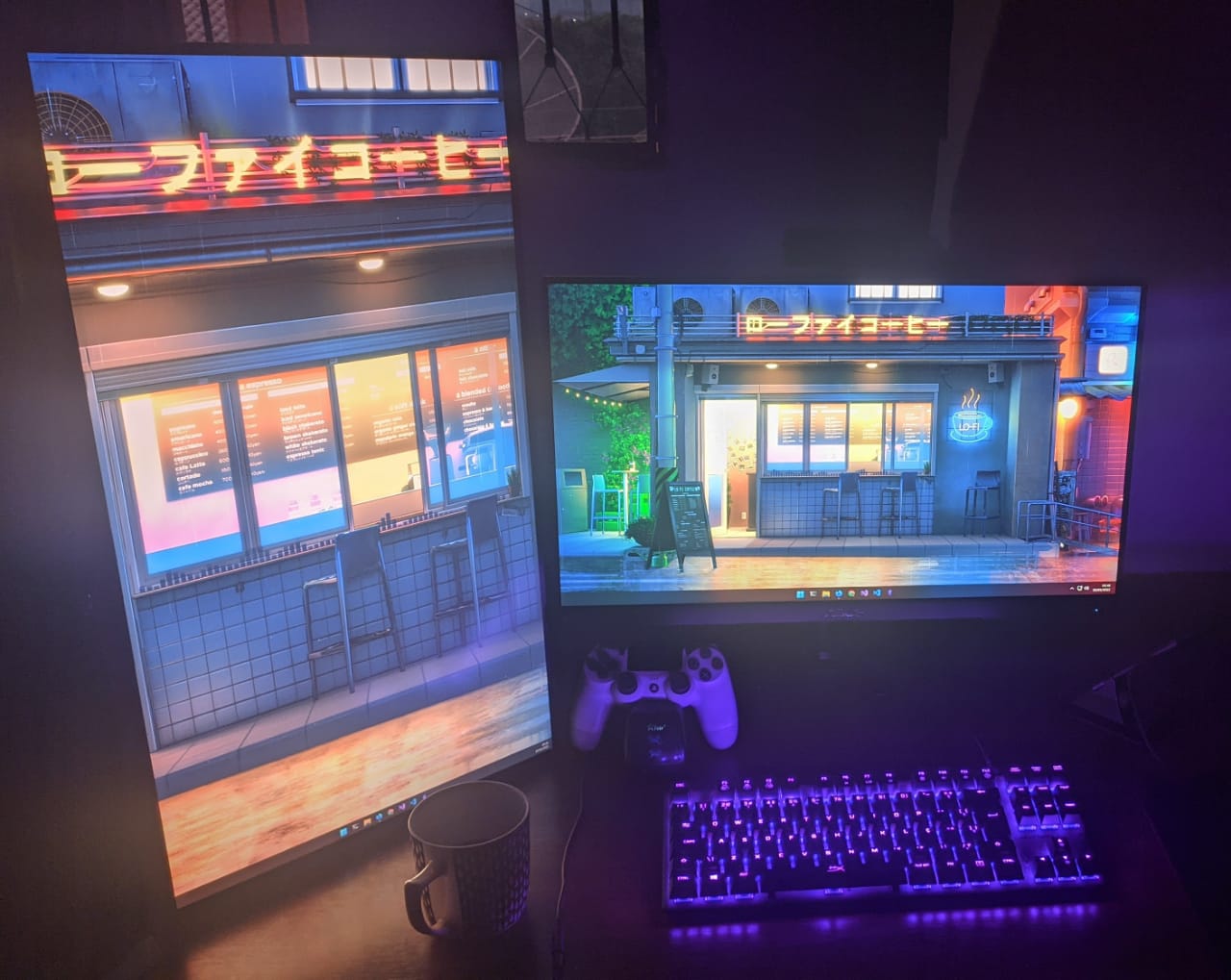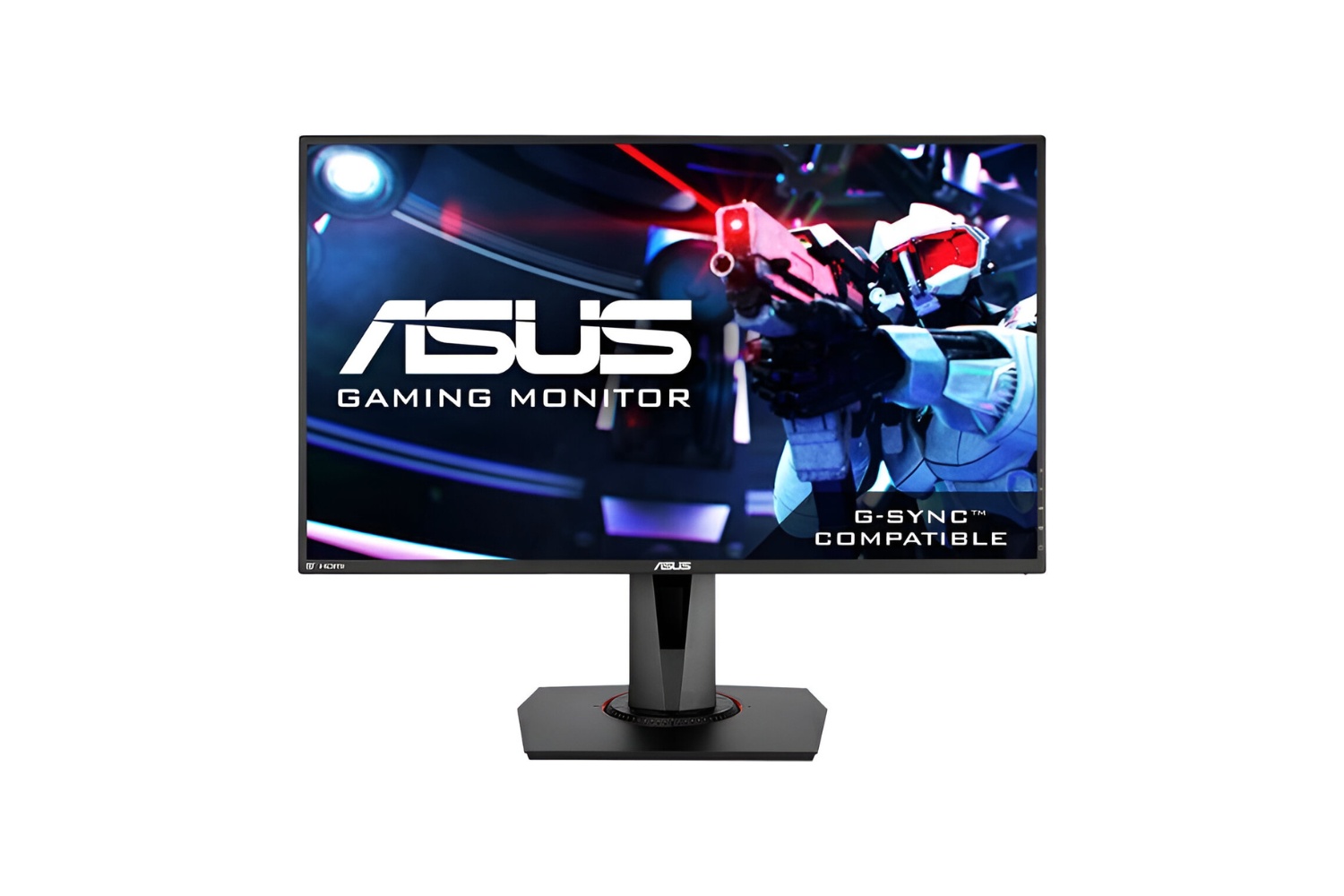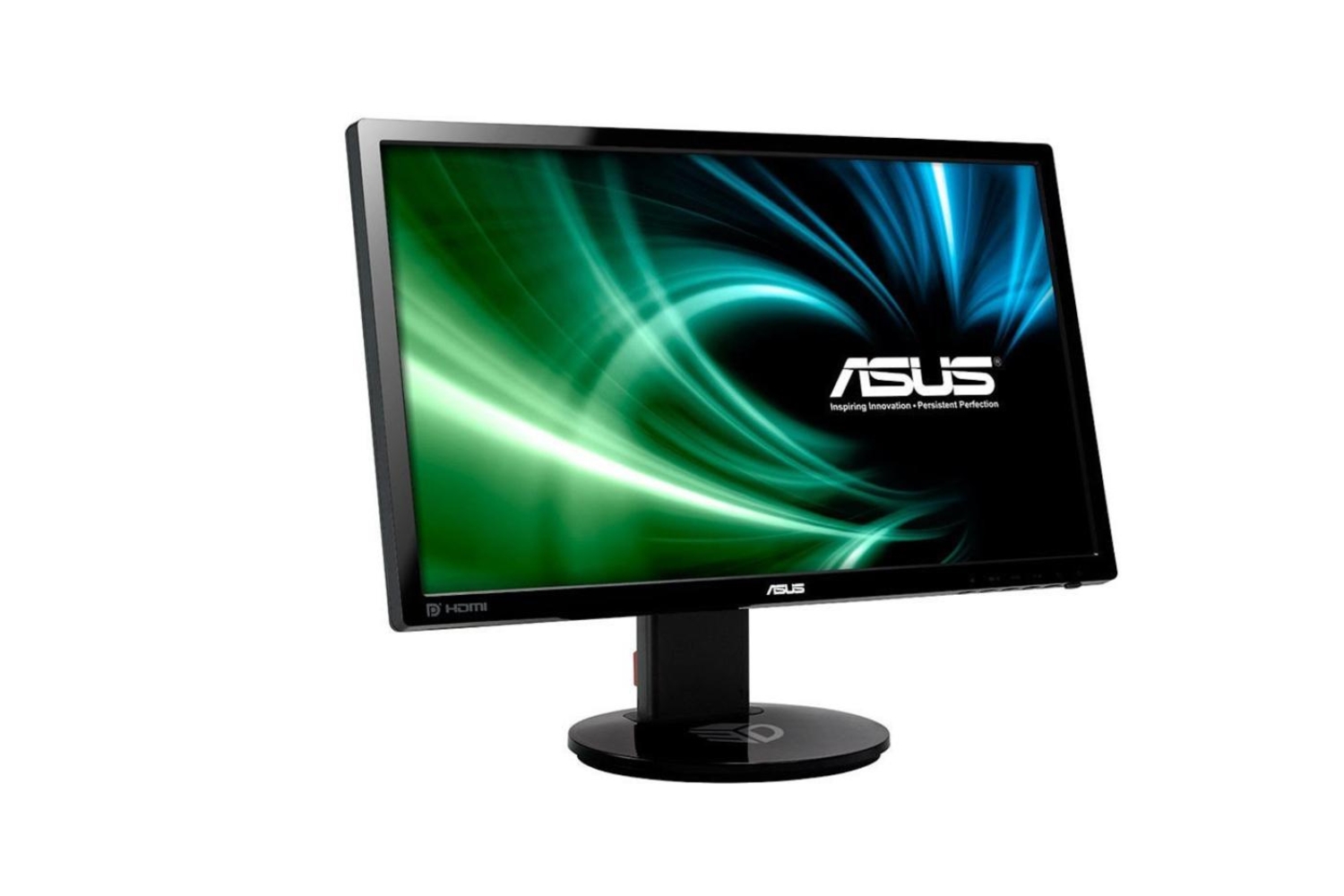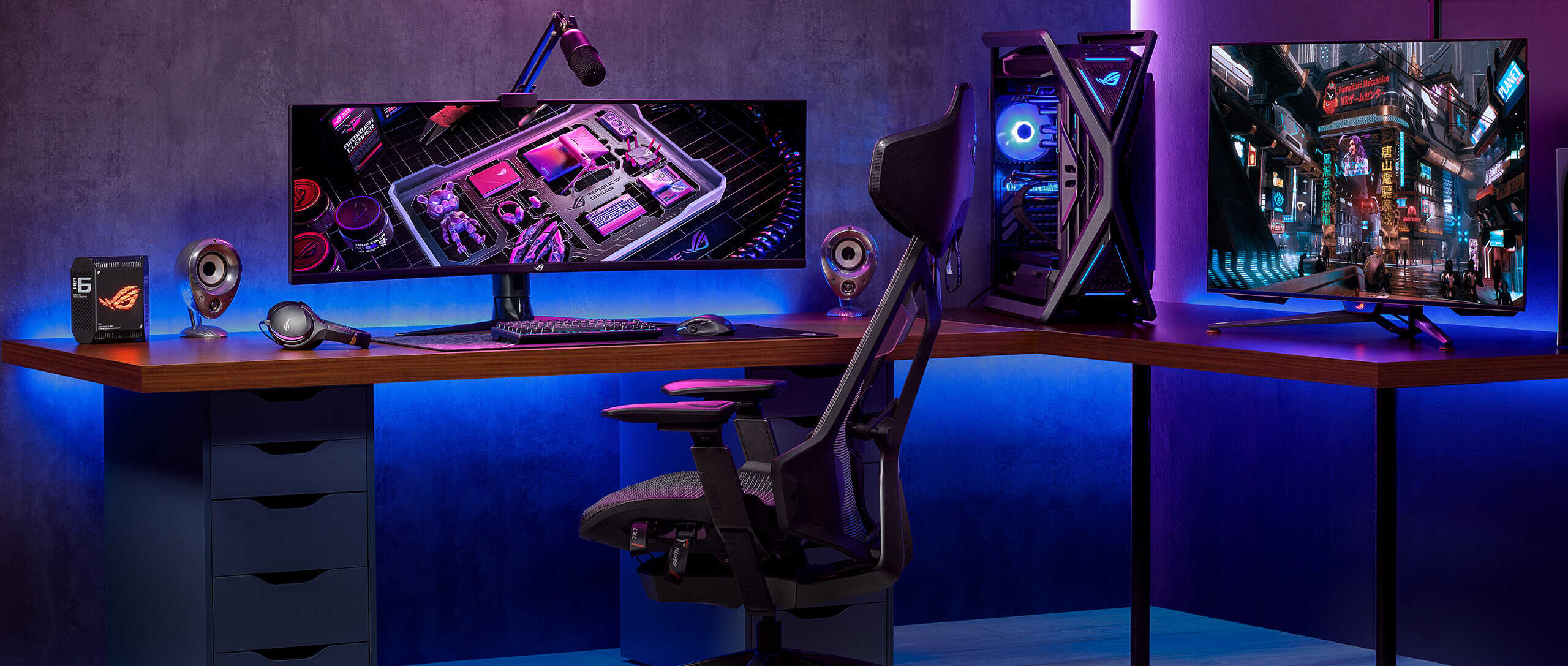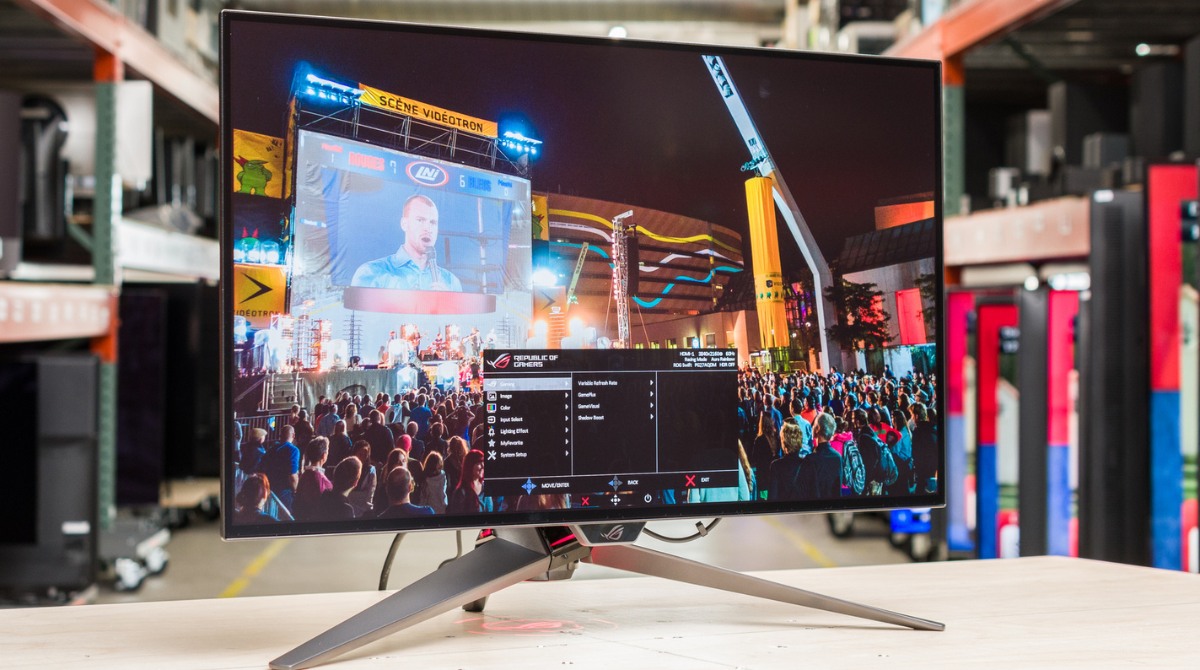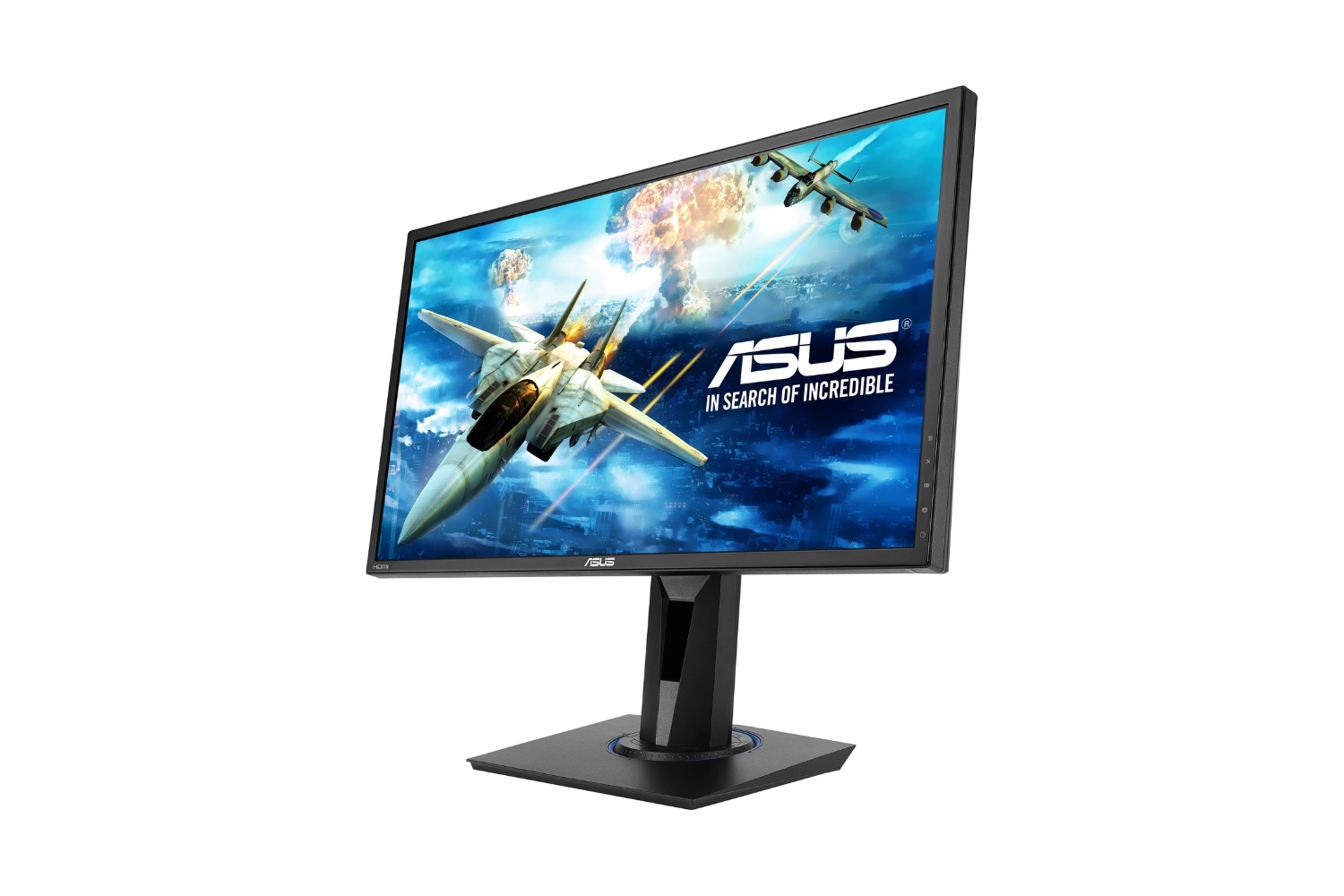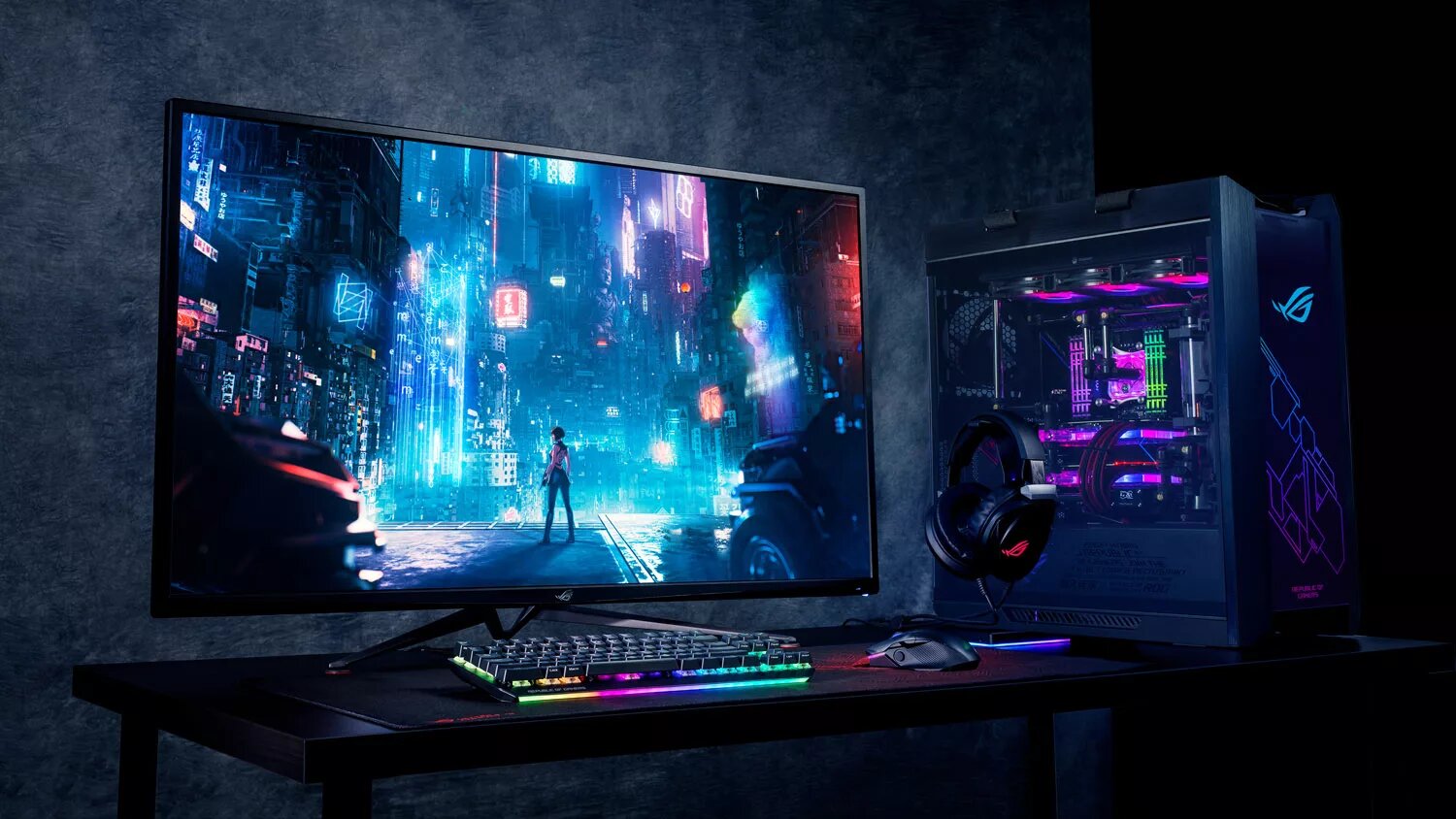Introduction
Welcome to our guide on setting up the ASUS VG248 gaming monitor to achieve a refresh rate of up to 144Hz. If you’re an avid gamer or someone who values smooth and fluid visuals, then you’re in the right place. The refresh rate of a monitor plays a crucial role in determining the quality of motion and overall gaming experience. With the ASUS VG248, you have the opportunity to unlock its full potential and take your gaming to the next level.
This guide will walk you through the steps necessary to set up your ASUS VG248 monitor for a refresh rate of up to 144Hz. We will cover everything from checking your computer’s compatibility to connecting the monitor and configuring display settings. We’ll also provide tips for adjusting monitor settings and troubleshooting common issues you may encounter.
Before we dive into the setup process, let’s briefly discuss what refresh rate means and why it’s important. The refresh rate refers to the number of times per second that a monitor updates its displayed image. A higher refresh rate, such as 144Hz, results in smoother motion and reduced blur, making it ideal for fast-paced gaming and actions. It allows for quicker reaction times, improved visibility, and an overall more immersive gaming experience.
Now that you have a better understanding of the importance of refresh rate, let’s move on to the next section, where we’ll discuss checking your computer’s compatibility with the ASUS VG248 gaming monitor.
Understanding Refresh Rate
Before we embark on the journey of setting up the ASUS VG248 gaming monitor to achieve a refresh rate of 144Hz, let’s take a moment to understand what exactly refresh rate is and why it matters.
Refresh rate refers to the number of times per second that a monitor refreshes or updates the image displayed on the screen. It is measured in Hertz (Hz). The higher the refresh rate, the more times the monitor updates the image, resulting in smoother and more fluid motion.
For gamers, a higher refresh rate is crucial as it directly impacts the gaming experience. With a higher refresh rate, each frame is displayed for a shorter duration, reducing motion blur and improving overall smoothness. This is particularly important for fast-paced games where quick reflexes and precise movements are essential.
The standard refresh rate for most monitors is 60Hz, which means the image refreshes 60 times per second. However, gaming enthusiasts often strive for higher refresh rates like 120Hz or even 144Hz to maximize their gaming performance.
It’s important to note that the benefits of a higher refresh rate go beyond gaming. Tasks like scrolling through documents, browsing the web, and watching videos can also feel more fluid and responsive with a higher refresh rate.
However, it’s worth mentioning that in order to fully experience the benefits of a higher refresh rate, your computer’s hardware must be able to keep up. Your graphics card needs to be capable of rendering frames at the desired refresh rate. Additionally, the game or application you’re using should support higher refresh rates.
Armed with this understanding of refresh rates, you’re now ready to check your computer’s compatibility with the ASUS VG248 gaming monitor.
Checking Computer Compatibility
Now that you have a grasp of what refresh rate is and its significance, it’s time to ensure that your computer is compatible with the ASUS VG248 gaming monitor. Checking compatibility will help ensure that you can achieve the desired 144Hz refresh rate and maximize your gaming experience.
The key component to consider when checking compatibility is your computer’s graphics card. The graphics card is responsible for rendering and displaying the images on your monitor. To achieve a refresh rate of 144Hz, you need a graphics card that can handle the increased workload.
Start by checking the specifications of your graphics card. Look for information on the maximum supported refresh rate. If your graphics card is capable of supporting 144Hz, then you are good to go. Popular graphics cards from NVIDIA and AMD, such as the GeForce GTX series or Radeon RX series, often support high refresh rates.
If you are unsure about the capabilities of your graphics card, there are a few ways to check. You can refer to the manufacturer’s website and search for your specific model. Another option is to use third-party software, such as GPU-Z or Speccy, which provide detailed information about your graphics card, including its maximum refresh rate support.
Keep in mind that having a compatible graphics card alone may not guarantee the 144Hz refresh rate. The capabilities of your display output ports and cables also play a role. Ensure that both your graphics card and the monitor have matching display ports or dual-link DVI ports, as these are often required for achieving high refresh rates.
Lastly, check the software and games you’ll be using on your computer. Some older games or applications may not support refresh rates above 60Hz. Make sure to update your games and software to the latest versions to ensure compatibility with a higher refresh rate.
By verifying your computer’s compatibility with the ASUS VG248 gaming monitor, you’ll be one step closer to unlocking its full potential. In the next section, we will guide you through the process of connecting the monitor to your computer.
Connecting the Monitor
Now that you know your computer is compatible with the ASUS VG248 gaming monitor, it’s time to connect them together. Follow these steps to ensure a proper connection:
- Check the contents of the monitor package: Open the box and verify that you have all the necessary components, including the monitor, stand, power cable, and any required cables (such as HDMI or DisplayPort).
- Position the monitor: Find a suitable location for your monitor on your desk. Ensure that it is placed on a stable surface and at a comfortable viewing distance.
- Attach the stand: Connect the stand to the monitor by aligning the slots and gently pushing it in until it clicks into place. Make sure the stand is securely attached to the monitor.
- Connect the power cable: Plug one end of the power cable into the monitor’s power inlet and the other end into a power outlet. Ensure a secure connection.
- Choose the right cable: Depending on your computer’s graphics card and available ports, choose between HDMI, DisplayPort, or DVI cables. Pick the one that matches both your computer’s output port and the monitor’s input port.
- Connect the cable to the monitor: Insert one end of the chosen cable into the corresponding port on the back of the monitor. Ensure a firm connection without forcing the cable.
- Connect the cable to the computer: Locate the matching port on your computer’s graphics card and insert the other end of the cable into it. Again, make sure the connection is secure.
- Secure the cables: Use cable clips or ties to neatly organize and secure the cables. This will not only improve the aesthetics but also prevent accidental disconnections.
Once you have successfully connected the ASUS VG248 gaming monitor to your computer, power on both devices. You should see the monitor come to life, displaying your computer’s output. If the monitor doesn’t display anything, double-check the connections and ensure that both the monitor and computer are powered on.
In the next section, we will guide you through the process of configuring the display settings to achieve the desired refresh rate.
Configuring Display Settings
Now that you have successfully connected the ASUS VG248 gaming monitor to your computer, it’s time to configure the display settings to achieve the desired refresh rate of 144Hz. Follow these steps to ensure optimal settings:
- Access the display settings: Right-click on your desktop and select “Display settings” or “Graphics options.” This will open the display settings menu.
- Set the correct resolution: In the display settings menu, ensure that the resolution is set to the native resolution of the monitor, which is typically 1920×1080 for the ASUS VG248. Select the appropriate resolution from the available options.
- Adjust the refresh rate: Within the display settings menu, locate the option to change the refresh rate. Depending on your operating system, it may be labeled as “Refresh rate,” “Screen refresh rate,” or something similar. Select the desired refresh rate of 144Hz from the available options.
- Apply the changes: Once you have selected the correct resolution and refresh rate, click “Apply” or “OK” to save the changes. The monitor will now operate at the configured settings.
- Confirm the refresh rate: To verify that the ASUS VG248 is displaying at the intended refresh rate, open the display settings menu again and check if it reflects the selected refresh rate of 144Hz.
It’s important to note that the availability of specific display settings can vary depending on your graphics card and operating system. If you can’t find the exact options mentioned above, refer to the user manual or support documentation for your graphics card and operating system.
Once you have configured the display settings for the ASUS VG248 gaming monitor, the system will now refresh the displayed image at the desired 144Hz refresh rate. This will result in smoother motion and improved gaming performance.
In the next section, we will explore additional monitor settings that you can adjust to further enhance your gaming experience.
Adjusting Monitor Settings
While configuring the display settings on your computer is important for achieving the desired refresh rate, there are also various monitor settings that you can adjust to further enhance your gaming experience with the ASUS VG248. Let’s take a look at some of these settings:
- Brightness and Contrast: Adjusting the brightness and contrast settings can significantly impact the visuals on your monitor. Find a balance that suits your preference and provides optimal visibility without causing eye strain.
- Color Settings: You can fine-tune the color settings of the monitor to enhance the vibrancy and accuracy of the displayed colors. Use the monitor’s OSD (On-Screen Display) menu to access color settings like saturation, hue, and gamma correction.
- Black Equalizer: The ASUS VG248 offers a Black Equalizer feature that allows you to enhance visibility in darker areas of games. Adjusting this setting can help you spot enemies or objects that are traditionally harder to see in low-light conditions.
- Game Visual Modes: The monitor provides different pre-defined visual modes, such as gaming, cinema, and scenery modes. Experiment with these modes to see which one best suits your preferences for different types of content.
- Response Time: The response time setting determines how quickly pixels transition between colors. Lower response times can minimize motion blur in fast-paced games. Adjust this setting based on your personal preference and the requirements of the game.
- Overclocking: Some gaming monitors, including the ASUS VG248, have the option to overclock the display for even higher refresh rates. Keep in mind that overclocking may not be supported by all hardware configurations and may increase the risk of performance or stability issues.
Each of these settings can be accessed through the monitor’s OSD menu. To access the OSD menu, use the buttons located on the monitor itself. Refer to the user manual for specific instructions on navigating the OSD menu and adjusting settings.
Take some time to experiment with these monitor settings and find the combination that enhances your gaming experience. It’s important to note that preferences may vary, so adjust the settings to suit your personal taste and optimize visual quality.
In the next section, we will discuss how to test the refresh rate and ensure that it is functioning as intended.
Testing the Refresh Rate
After setting up and configuring the ASUS VG248 gaming monitor with a refresh rate of 144Hz, it’s important to confirm that the monitor is indeed operating at the intended refresh rate. Here are a few methods to test the refresh rate:
- Refresh Rate Test Online: There are several websites that offer simple online tests to check the refresh rate of your monitor. These sites display a moving object or pattern on the screen and provide real-time feedback on the refresh rate. Simply search for “refresh rate test” in your preferred search engine to find a suitable online tool.
- Display Settings: As mentioned earlier, you can verify the refresh rate through the display settings menu on your computer. Open the display settings and ensure that it reflects the selected refresh rate of 144Hz.
- Gaming Performance: Another way to gauge the effectiveness of the refresh rate is by playing games that require fast and precise movements. Observe the smoothness and responsiveness of the gameplay. If you notice a significant improvement in motion clarity and reduced blur, it indicates that the higher refresh rate is indeed being utilized.
- Motion Blur Reduction: The ASUS VG248 offers a feature called “Motion Blur Reduction” (MBR) that aims to minimize motion blur during fast-paced gaming. Enabling this feature can further enhance the visual clarity and reduce ghosting effects. Refer to the user manual for instructions on how to enable and adjust the MBR feature.
By employing one or more of these methods, you can verify that the ASUS VG248 gaming monitor is operating at the desired refresh rate of 144Hz. If you encounter any issues or if the refresh rate does not seem to be functioning correctly, proceed to the troubleshooting section to address common problems.
Congratulations! You have successfully set up and tested the refresh rate of the ASUS VG248 gaming monitor. In the next section, we will discuss common troubleshooting tips to help overcome any issues that may arise during the setup process.
Troubleshooting
While setting up and configuring the ASUS VG248 gaming monitor, you may encounter some common issues. Here are a few troubleshooting tips to help you overcome these problems:
- No Display: If the monitor is not displaying anything, double-check the connections between the monitor and the computer. Ensure that both ends of the cable are securely plugged in. Confirm that both the monitor and the computer are powered on. If the issue persists, try using a different cable or port to eliminate the possibility of a faulty connection.
- Incorrect Resolution or Refresh Rate: If the monitor is displaying at the wrong resolution or refresh rate, access the display settings on your computer and ensure that the correct settings are selected. Confirm that the refresh rate is set to 144Hz and the resolution matches the native resolution of the monitor (1920×1080 for the ASUS VG248).
- Incompatible Graphics Card: If you discover that your graphics card does not support a 144Hz refresh rate or does not have the necessary ports for high refresh rates, you may need to upgrade your graphics card to achieve the desired refresh rate.
- Driver Updates: Ensure that your graphics card drivers are up to date. Outdated or incompatible drivers can lead to display-related issues. Visit the manufacturer’s website for your graphics card and download the latest drivers. Install them and restart your computer to apply the updates.
- Overclocking Issues: If you have overclocked the monitor to achieve a higher refresh rate, but are experiencing stability issues or artifacts on the screen, try returning the monitor to its default settings. Overclocking can put additional strain on the monitor and may not be stable under all circumstances.
- Game and Application Compatibility: Some games or applications may have limitations regarding high refresh rates. Ensure that your games and applications support refresh rates above 60Hz. Update them to the latest versions or check their documentation for any specific requirements.
If you have tried the troubleshooting tips above and still encounter issues with the setup or operation of the ASUS VG248 gaming monitor, consult the user manual or reach out to the manufacturer’s customer support for further assistance. They will be able to provide specific guidance and solutions based on your unique situation.
With these troubleshooting tips, you should be able to address common issues and enjoy the optimal performance of the ASUS VG248 gaming monitor at a refresh rate of 144Hz.
In the next section, we will conclude our guide and summarize the key points discussed throughout the article.
Conclusion
Congratulations on successfully setting up and optimizing the ASUS VG248 gaming monitor to achieve a refresh rate of up to 144Hz! By following the steps outlined in this guide, you have unlocked the full potential of your monitor and taken your gaming experience to the next level.
We began by understanding the importance of refresh rate and how it impacts motion clarity and gaming performance. We then delved into checking your computer’s compatibility with the ASUS VG248 gaming monitor, ensuring that your hardware can handle the high refresh rate.
Next, we covered the process of connecting the monitor to your computer, ensuring secure and reliable connections. We then moved on to configuring the display settings, where we set the resolution to the native resolution of the monitor and adjusted the refresh rate to 144Hz.
Additionally, we explored various monitor settings that you can adjust to further enhance your gaming experience, such as brightness and contrast, color settings, and black equalizer. These adjustments allow you to personalize the visuals according to your preferences.
We discussed how to test the refresh rate to confirm its functionality. Whether through online refresh rate tests or observing the improved gameplay experience, testing ensures that your ASUS VG248 monitor is operating at the intended refresh rate.
In the event of any issues or challenges, we provided troubleshooting tips to help you overcome common problems. These tips covered issues related to connectivity, resolution, compatibility, drivers, and game/application requirements.
Remember to refer to the user manual or contact customer support if you need further assistance with any specific issues you may encounter during the setup or operation of your ASUS VG248 gaming monitor.
With your ASUS VG248 gaming monitor now properly set up and optimized, you can enjoy smooth, fluid, and immersive gaming experiences with reduced motion blur and enhanced visuals. Take advantage of the high refresh rate to gain a competitive edge in fast-paced games and enjoy an overall more engaging gaming environment.
Thank you for choosing the ASUS VG248 gaming monitor, and happy gaming!







